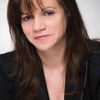In celebration of President Obama's recent proclamation of June as National LGBT Pride Month, there was no better time to acknowledge the strides made in favor of LGBT rights of late than with New York City's Pride parade last month, where leading non-profit organizations, retailers, and even some religious groups celebrated the expansion LGBT rights across the U.S. And perhaps there was no better month for me, having recently identified myself as a gay woman, to experience an event that reminded me of how painful it was to conceal my true self in the many years preceding.
Having agreed to participate in a panel discussion at New York City's Flomenhaft Gallery about what it was like to be a teenager who concealed her sexual orientation in the 1970s, little did I know that not only would one of the members of the audience remember me as her college student in the '70s, but my experience in her classroom would ultimately foreshadow my "coming out" during this presentation more than three decades later.
Appropriately surrounded by an art exhibition dedicated to tearing down all forms of gender prejudice through sculpture, Linda Stein's exhibit "Fluidity of Gender" provided the perfect backdrop for me to "come out" by discussing the self-imposed repression of my sexual identity as a teenager living under my parents' rigid control, ultimately leading to two marriages (to men), two divorces (no surprise there), and two fabulous children who are now adults (my greatest accomplishments). But it seemed like only yesterday that I sat in Professor Farley's classroom as an undergraduate student at Brooklyn College in 1979, trying to complete the necessary coursework to earn a dual major in Women's Studies. As the founder of the college's Women's Studies program, the first of its kind in the country, Dr. Farley was teaching the course "Realities of Lesbian Experience," a groundbreaking subject dedicated to educating students about the lifestyles of gay women throughout history. As Dr. Farley opened the first class by introducing herself as a gay woman, she then invited each of us to voluntarily share something about ourselves, as well. I recall that each student who exhibited the courage to announce that she was gay seemed particularly eager to do so, as if she could finally breathe freely by publicly revealing her sexual orientation, as well as the challenges, obstacles, and fears she faced as a lesbian during that decade.
But as brave as these students were about discussing their lesbian lifestyles behind that classroom's closed doors, that is where they felt their freedom ended. Many were so concerned about being exposed, in fact, that they opted to only "monitor" the class, rather than to enroll, so that the course would not appear on their college transcripts and thereby prevent any potential discrimination from future graduate-school admissions offices.
But my discomfort as a student in this classroom, where I proudly yet falsely proclaimed my heterosexuality, was no match for the higher level of anxiety I felt when I interviewed Professor Farley as a reporter for the college newspaper during that same semester. While I proudly affirmed my feminist views, I was still desperately trying to suppress my true sexual orientation. That is why, I suspect, when I entered Dr. Farley's office to conduct the interview, my anxiety reached a crescendo as I sat in a chair that seemed uncomfortably close to hers, and where her eyes seemed to look right through me as she responded to my interview questions. Could she sense how nervous I felt? Was she aware that I was hiding my true sexuality? Did she know how desperately I wanted to run out of her office and never return? These questions silently swirled around in my head as I tried to plan my escape, not really wanting to learn the answers to any of these questions at all. But now, 33 years later, I finally got my answers. "Weren't you that uptight student who interviewed me?" Dr. Farley asked me upon completion of my "coming-out" speech a few weeks ago. "Yes," I laughingly responded, retelling how much I'd feared that she'd been able to sense the true sexual orientation that I was so desperately trying to conceal back then. She said she hadn't, but clearly discerned, and even more distinctly recalled, my level of distress during that interview. She apologized for making me feel so uncomfortable, but I relayed that these feelings were based more upon my need to cover up who I was at the time, and had less to do with her.
I was never quite able to write that article for the college newspaper. It was too difficult to put pen to paper, I recall, because I felt that it would have forced me to address issues related to my true sexual orientation. But as I proudly stood behind the barricades watching the LGBT Pride parade last month, I knew that now was the perfect time to revisit this experience and finally tell my story, once and for all. For even though paper and pens have long been replaced with computers and keyboards, the importance of being true to oneself is no less necessary, and no less liberating, than it ever was. And now I can speak from experience.
Lori Sokol, Ph.D., is founder and publisher of Work Life Matters magazine, and author of The Agile Workplace and Workforce: The New Future of Work (2011).
